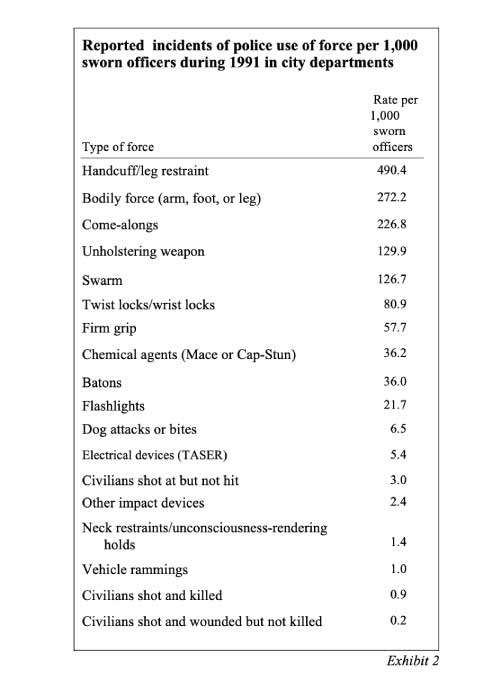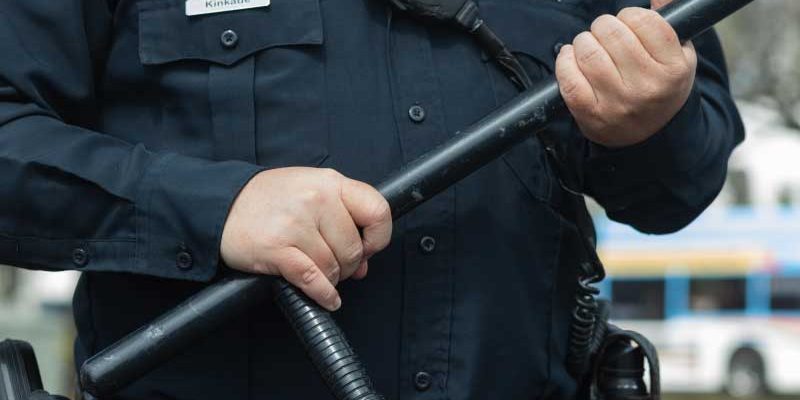Use of Force Regulations for Flashlights Used as Impact Weapons
During a police stop in Detroit, Michigan in 1992, Malice Green was involved with an altercation with police officers that ended in his death.
Green wasn’t shot to death.
Instead, Green’s death was attributed to “fourteen blunt force trauma blows to the head,” as described by the coroner who was assigned to evaluate the cause of death in the incident. During Green’s encounter with the police, he was reportedly hit with a flashlight as many as 14 times by one of the officers after he reportedly did not follow the orders of one of the officers, who demanded that he let go of an object he was holding in the glovebox of his car.
Although this incident, wherein a person’s life was ended when police used a flashlight as an impact weapon, is much less common than other uses of force among law enforcement personnel (including using handcuffs and leg restraints or exerting bodily force using the arms, feet, or legs), the use of flashlights as impact weapons similar to how police batons are used is sufficient to merit regulations on the use of flashlights similar to what law enforcement departments have in place for the use of batons.
The table below, from data included in a 1996 survey published by the Bureau of Justice Statistics, shows the similarities among baton and flashlight use, with batons being used by 36 per 1,000 officers and flashlights being used among 21.7 per 1,000 officers.

While police batons and flashlights can have very different applications in law enforcement activities, there is sufficient overlap, namely, the ability to strike a person with a hard object to subdue him, that many law enforcement agencies have combined their guidance for use of police batons and flashlights into a single policy on impact weapons, an umbrella that encompasses both devices.
The Flashlight as an Impact Weapon
In many law enforcement manuals, flashlights are classified alongside batons, billy clubs, riot sticks, and similar devices as an impact weapon. Many law enforcement agencies make the distinction that flashlights are non-traditional or improvised impact weapons, because the primary purpose of a flashlight is to provide light for vision rather than for accosting someone. However, for general classification purposes, flashlights are impact weapons.
Regulations that Govern Impact Weapons
Many law enforcement agencies specify what type of impact weapons are to be used among their personnel, including specifications about batons and flashlights. For example, the Salisbury Police Department (Salibury, Maryland), under their guidance for Agency Approved Less Lethal Impact Weapons, describes an impact weapon as a “collapsible baton or flashlight”. The guidance on use of impact weapons then restricts the use of impact weapons to collapsible batons, crowd control straight batons, flashlights, and ballistic impact weapons.
Specifically regarding the use of flashlights as impact weapons, the Salisbury Police Department defers to its policy for impact weapons in general:
If the issued or approved flashlight is used for defensive purposes in an emergency situation, the provisions in this policy shall apply.
Salisbury Police Department Written Directive: Less Lethal Weapons
This type of general impact weapon policy, where batons and flashlights are treated essentially the same, is common among law enforcement regulations.
Restrictions on Flashlights as Impact Weapons
In some cases, specific policy is made regarding distinguishing between flashlights and batons as impact weapons. For instance, the Seattle Police Department prohibits officers from using flashlights as impact weapons except in exigent circumstances. Their specific policy states:
The use of improvised weapons, such as flashlights, may present a greater risk of injury than batons. Use of another object in place of the baton, including flashlights, is prohibited unless there is an immediate need to strike and an officer is precluded from using or cannot feasibly use the TASER, baton, or OC spray.
The failure to carry a baton, in and of itself, does not justify the regular use of a flashlight as an impact weapon. Routine reliance on flashlights as an impact weapon is prohibited.
Resources

